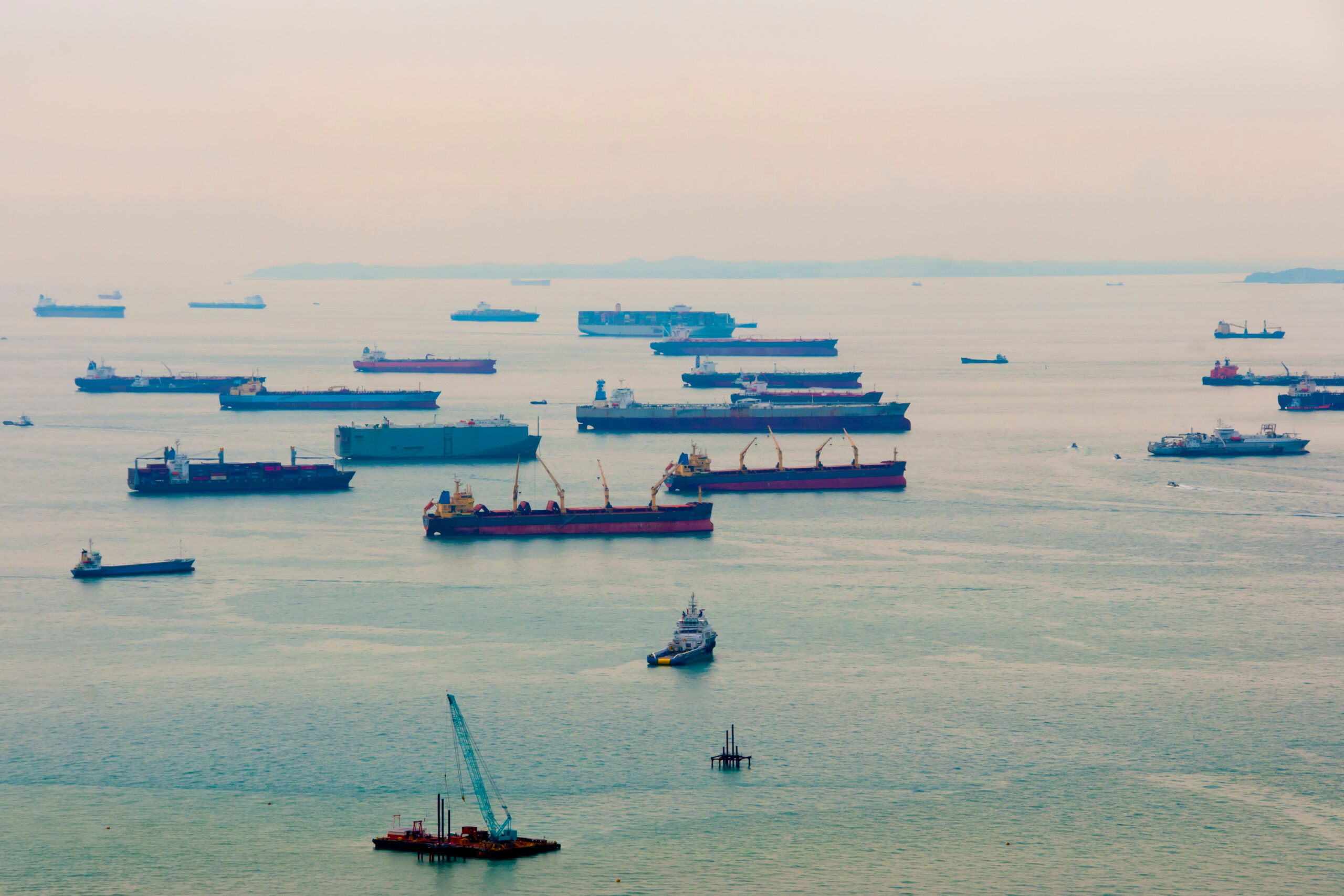Australia’s supply chain weathers a perfect storm of contaminated cargo, vessel attacks, cargo influx, labor shortages, and disputes.
There will never be just one reason for a congested port so if this article overlooks anything please send me a message on LinkedIn with your revision and we will review and potentially amend the article.
Alright. Back to business. Port congestion is a fickle animal but when it begins to linger questions arise, answers falter, and clients get frustrated. Nobody wants that so let’s work to solve this once and for all.
From THE source. To THE people.
Navigating Turmoil: Australia’s Supply Chain in Crisis
- RORO Chaos and Environmental Threats
Australia’s vital trade is in disarray as Roll-on-Roll-off (RORO) imports trigger literal traffic jams at ports. The surge of vehicles overwhelms port capabilities, causing substantial delays. The amplified risks of contamination during prolonged stays in holding areas post-manufacturing increased imports pose a major challenge, requiring significant quarantine measures to prevent the transfer of invasive species.
- Labor Disputes and Port Predicaments
Ongoing labor disputes in Australian ports spanning several months compound the challenges. Several strikes over the last 7 months have added to the already prevalent delays and have caused worldwide affects.
This has particularly in Sydney, insurmountable fees at Patrick Terminals force vessels to reroute to Melbourne, Brisbane, and Fremantle. This strategic shift aims to distribute delays more evenly and reduce fees for shippers, but it adds a layer of complexity to an already strained system.
- Staggering Scale of the Crisis
The issue’s scale is immense, with congestion costs reaching a staggering $84 million per week. A backlog of 44,000 containers requires an estimated two months for clearance. Freight costs, especially in land transport, surge by up to 20 percent. Congestion surcharges further complicate matters, with responsibilities shifting among stakeholders. The Red Sea dispute intensifies the complexity as major shipping companies pause shipments through a vital channel, affecting 12 percent of global seaborn cargo and a significant route to Australia. Rerouted shipments around South Africa exacerbate delays and increase shipment costs.
- Economic Repercussions and Consumer Concerns
The economic ripple effect extends to consumer goods pricing. While direct cost increases may not be drastic, organizations could exploit the situation to justify price hikes, potentially impacting consumers. Concerns arise over economic shifts being exploited without being labeled as price gouging.
- Struggles in the Food Industry
Refrigerated goods, crucial in the food industry, bear the brunt of disruptions. Soaring refrigeration costs compound challenges, affecting farmers operating on razor-thin profit margins. Hindered by extra shipping costs and an inability to efficiently move stock, the natural consumable industry faces a tangible threat.
- The Perfect Storm: A Summary
Australia’s supply chain weathers a perfect storm of contaminated cargo, vessel attacks, cargo influx, labor shortages, and disputes. Stakeholders across industries feel the impact, testing the resilience of the supply chain. As the situation evolves, collaborative efforts among stakeholders become imperative to mitigate immediate challenges and fortify a more robust and adaptable supply chain for the future.
Next week we will review the issues arising from the Red Sea Dispute!
_________________________________________________________________________________________________________________
Here’s a chart showing what these delays look like according to www.gocomet.com.
Melbourne (AUMEL) – 8 days
Port of Sydney (AUSYD) – 8 days
Adelaide (AUADL) – 11 days
Brisbane (AUBNE) – 4 days
Fremantle (AUFRE) – 7 days
Townsville (AUTSV) – 1 day
Now that we’ve discussed what’s causing these delays and how those delays might affect you, let’s talk about what GoComet is and how it works. If you are already familiar with GoComet proceed to the break to continue reading.
GoComet provides real-time data pulled straight from over 45,000 containers a month across over 400 major seaports spanning 4 major regions (US, EU, EMEA, SEA). These technical geniuses have developed a smart algorithm that is capable of tracking, organizing, and processing all that compounding data continuously with the end result being a calculated congestion/delay schedule based on turnaround times. More specifically, time spent by vessels in proximity to the port at a given arrival/departure port and the time taken be the container to gate-out.
With that said what GoComet does is not a perfect science but due to the massive amount of precise data they’ve been recording since 2016 we as industry professionals can be confident that they have had time to learn patterns and strategies to increase their precision meaning we can finally be a tad more confident when speaking with clients and colleagues.
_________________________________________________________________________________________________________________
Our solutions team is dedicated to understanding how we can assist you in navigating these complex situations.
Connect with us for a no obligation consultation!
Sources
- Australia Port Congestion / Delay Status Data – GoComet
- Nationwide labour unrest in Australian ports cause delays and congestions (supplychainchannel.co)
- DP World port dispute: how damaging is this to Australia’s economy and will it push up prices? | Australian economy | The Guardian
- Australian port congestion continues into 2023 – Freightplus
- https://www.bing.com/search?q=are+farmers+on+thin+margins%3F&cvid=0dc54ff9937147e0b254c349a3dc9126&gs_lcrp=EgZjaHJvbWUyBggAEEUYOTIGCAEQABhAMgYIAhAAGEAyBggDEAAYQDIGCAQQABhAMgYIBRAAGEAyBggGEAAYQDIGCAcQABhAMgYICBAAGEAyBwgJEEUY_FXSAQg0ODkzajBqOagCALACAA&FORM=ANAB01&PC=U531



